Afghanistan's military geography, power centres and our policy morass
Pakistan’s Afghan policy faces criticism, but after strategic patience, options have reached a deadlock

So far in this debate, we have discussed the Afghan Taliban's demonstrated hostility towards Pakistan; their violation of Pashtunwali, Islamic fraternity and good neighbourliness; Pakistan's ability to fight a '1.5 Front' Indo-Afghan aggression, if imposed; Afghanistan and CARs relevance; the 'Haqqani Complexity'; the fallacy of Talib victory against the Soviet Union and the US-NATO Combine; the absurdity of Indo-Afghan nexus against Pakistan; and the collapse of 3rd round of Pak-Afghan talks in Istanbul because of Afghan recalcitrance on agreeing to Pakistan's minimum ask i.e. reigning in the TTP.
TTP splinter group, Jamaat ul Ahrar, claimed responsibility for the November 11 suicide attack in Islamabad. And APS-style catastrophe by the same TTP hosted by 'brotherly Afghan Talibs', the 21st Century protectors of Islam, was averted in Cadet College Wana.
Pakistan's policy calibrations about effective, quick and punishing response to Afghan-based terrorism; and the prevalent regional sentiment, and discussions among the diplomatic corps especially in the West Plus, about the least palatable option of regime change in Kabul, are under spotlight. Pakistan's strategic patience, after employing all leverages, has not triggered behavioral change among Afghan Talibs.
Some other aspects of contemporary Afghanistan. First, Afghanistan's essential military geography. Hindu Kush divides Afghanistan into a mainly Pashtun south and largely non-Pashtun north. The latent hostility between Pashtuns and the non-Pashtun Tajik minority (the second largest ethnic group) and Uzbeks (Dostum's Taliban massacre in Sheberghan) during the First Republic (2002-2021), is a well-documented fault line. No other Afghan ethnicity is as integrated as Pashtuns are with Pakistan. Pashtun tribes' ethnic affinity motivates some scholars to typify greater Afghankhwa into lar (lower i.e. Pakistan) and bar (upper i.e. Afghanistan). During interaction with Afghans between 2005 and 2006, getting Pakistani ID card was a recurring Afghan demand.
Geography defines Islamabad's torment as Pakistan shares the longest border with Afghanistan, 2,670 km, as compared to Iran's 921 km, Tajikistan's 1,357 km, Turkmenistan's 804 km, Uzbekistan's 144 km and China's 91 km. However, Durand Line affords Pakistan command of heights and militarily effective defensive operations, besides standoff strikes. Border-based retaliation and stand-off attacks accrue more military benefits, as compared to the failed occupation strategy, adopted by USSR and the US-NATO Combine. It also annuls Talibs' advantage and experience in guerilla warfare. Pakistan also knows Afghanistan and Afghans better than any Western power for understandable reasons and has more ingress, influence and clout.
Second, Afghan power centres. Contemporary Afghanistan has some 3.5 power centres: a) puritanical Qandahar, the Pashtun mover and shaker of the Emirate; b) Haqqanis of Loya Paktia, the military muscle with their mlatar (proxy) TTP; c) the non-Pashtun belt north of Hindu Kush; and d) Herat to the West under relative Iranian influence (the half). In this milieu, Pakistan was right to bet upon TTA, under Pashtun power centers of Qandahar and Loya Paktia.
Preventing Afghanistan from splintering more recently, under these exploitable fissures, was thanks to Pakistan's steadfast opposition against it, and Islamabad's interlocution with the international stakeholders. Dethroning Taliban under sustained external support, though difficult, is not impossible, considering the prevalent faultlines and popular discontent on issues ranging from ethnic tensions to lack of economic opportunities to gender apartheid to terrorism to the deluge of relatively civil citizenry repatriating from Iran and Pakistan.
Third, the claim of winning against both superpowers, touted fondly by all and sundry in Afghanistan, is fundamentally incorrect. No superpower ever employed its full military potential against Talibs; and their purported 'victory' on both occasions was enabled by Pakistan's indispensable logistic, economic, military, diplomatic and advisory support. Pakistan is cited as the sole reason for Western failure in every serious study of America's longest war. Resting on laurels, facilitated by others, and not acknowledging it points to Taliban's intellectual bankruptcy.
Fourth, Pakistan has a policy predicament. In the think tank circles around Islamabad, one senses lament about the 'misdirection' of Pakistan's Afghan policy. Some analysts think that the State was pursuing half-backed Afghan policy options, forgetting that Islamabad, after demonstrating strategic patience for four years, had repeatedly tried all options suggested by these self-proclaimed, larger-than-life pseudo analysts, and reached a dead end. The aged analysts see things through a time tunnel that is good for history and guidance only. Undue criticism springs from intellectual incapacity, lack of detailed information and analytical prowess, and leads to such cynical, if incorrect assessments.
In Pakistan's policy formulation, the fear of 'Pashtunistan bogey' by successive Afghan Governments, and inciting 'Pashtun nationalism' in Pakistan has played a central role. Jihad against the USSR was a Godsend, when Islamabad under Islamist President Zia promoted 'religious identity across Afghankhwa' to inspire, execute and sustain jihad against the Shoravi (Soviet) forces. He correctly estimated then that the larger 'Islamic identity' would absorb the smaller 'Pashtun nationalism'. It did for a while, till the Taliban's second empowerment in 2021, when Afghan resentment and Pashtun nationalism resurfaced, particularly during the recent Pak-Afghan crisis.
Environment, dependent upon unfathomed variables, generates threats. And the problem of decision-maker is to respond to these threats today, without any means of fully grasping their implications tomorrow. Applying this test, one wonders where Islamabad went wrong to deserve such hate by the 'brethren' Muslim Afghans, including the ruling cabal, twice 'enabled' to power. Pakistan has shown respect, restraint, magnanimity and compassion; extended a helping hand; and 'allegedly played double game' to ensure Taliban win against the mighty West Plus. Taliban now choosing an obstinate impasse bodes ill for bilateral peace.
The conflict has also robbed the ruling Talib-clique of any residual Islamic credentials. Ideological movements after success inevitably succumb to power struggle from within. In case of Afghan Taliban, it was a power struggle to begin with, masked as socio-religious movement, that allowed the clergy to consolidate its political power against the normative secular Afghan socio-cultural norms.
As a way forward, Islamabad's preferred policy goal should be a combination within the Pashtun South and non-Pashtuns North, to re-arrange the Afghan applecart in a more inclusive, pluralistic and representative manner; besides retaining punishing leverages and improving defensive military posture.
A peaceful Afghanistan is a pliant Afghanistan, and a pliant Afghanistan a peaceful Afghanistan.



1729685382-0/Untitled-design-(57)1729685382-0-208x130.webp)


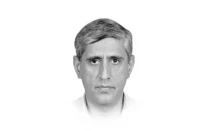

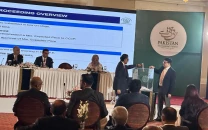

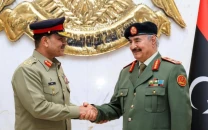
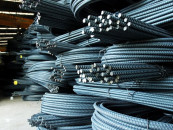
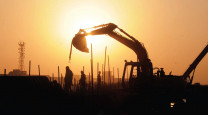
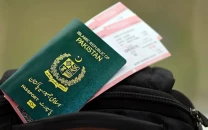

COMMENTS (1)
Comments are moderated and generally will be posted if they are on-topic and not abusive.
For more information, please see our Comments FAQ